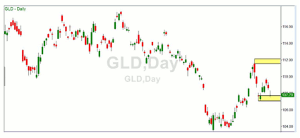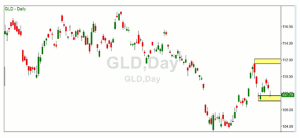For those with some or all of their investing and trading funds in a tax-advantaged account who are also interested in option trading, options instructor Russ Allen, of Online Trading Academy, discusses opportunities for option trading in such accounts, since all accounts of this type have restrictions on the type of investments that are allowed within them.
Many people have some or all of their investing and trading funds in a tax-advantaged account, like an Individual Retirement Account or 401(k) in the United States; or in Canada, a Registered Retirement Savings Plan of a Tax-Free Savings Account.
How an investor should decide how to allocate funds between these accounts and fully taxable accounts is beyond our scope here. The point of this article is to discuss opportunities for option trading in such accounts, assuming an investor has some money in one of them and is interested in option trading to begin with.
The reason the issue exists is because all accounts of this type have restrictions on the type of investments that are allowed within them. Some, but not all, option strategies may be allowed in the tax-advantaged account that you have.
A typical set of restrictions for a tax-advantaged account might be as follows:
Allowed:
- Covered Calls
- Protective Puts
- Long Calls
- Long Puts
- Cash-secured short puts (Some US accounts)
- Debit spreads (Some US accounts)
- Credit spreads (Some US accounts)
Not Allowed:
- Short stock
- Naked short puts
- Naked short calls
- Cash-secured short puts (Canada)
- Debit spreads (Canada)
- Credit spreads (Canada)
There are ways to structure trades in these accounts however, that allow us to, in effect, make some of the kinds of trades that are not specifically provided for. The investor can then make his or her choice from a wider selection of strategies.
The key to doing this is awareness of the equivalence between different option positions. If we are not allowed to make a short put trade, for example, then we can construct an equivalent to that short put using elements that are allowed. If we are not allowed to do a long call and a short call simultaneously (debit or credit spread), then we can create equivalents for those too.
Here Is an Example:
On September 3, 2015, the daily chart of GLD, the exchange-traded fund that tracks the price of gold, looked like this:
GLD was at a demand zone around $107. With interest rate rises probable in the near future and other factors, there was a pretty good bullish case for gold. Option premiums were not high. This was an opportunity for a limited risk bullish trade called a bull call spread. This would consist of a long call at the $107 strike as the moneymaker and a short call at the $112 strike to reduce cost and volatility exposure.
At that time, the $107 September calls could be bought for $1.89 and the $112 calls could be sold for $.33. Net debit on the trade would be $1.89 – .33 = $1.56. This would be our maximum loss, which would occur if GLD were to be below $107 at expiration. Maximum profit would be the $5.00 difference between the strikes ($112 – 107), less the $1.56 cost or $3.44.
NEXT PAGE: What Is the Equivalency Principle
|pagebreak|Here is the P/L graph of that trade with maximum profit and maximum loss shown in the table at the bottom of the chart:
Assuming that one was interested in this trade, there is a problem if we want to do it in a tax-advantaged account. The bull call spread is a debit spread which might not be one of the permitted position types.
However, using the equivalency principle, we can construct it in a different way that is allowable. Here’s how.
If we want to sell the $112 call in our tax-advantaged account we must also own the stock. The short call is then a covered call, which is allowed.
And here is where the equivalency comes in: a long stock position with a protective put at strike price x is equivalent to a simple long call position with strike price x. Equivalent to means that no matter what the stock price might be at expiration, both positions (the protected stock and the long call) would make or lose the same amount of money. And usually in tax-advantaged accounts, buying protective put options to accompany a long stock position is an allowed combination.
In this case, we could buy GLD at its current price of $107.73 and simultaneously buy the September $107 put, which was then available for $1.16. If, in the worst case, GLD then finished below $107 at expiration, we would lose $.73 per share on the stock, but no more than that since the put gives us the option to sell it at $107 no matter what.
We also have to add in the $1.16 cost of the put itself. This, together with the $.73 maximum loss on the stock, gives us a worst case loss for the protected stock position of $1.16 + .73 = $1.89. This amount may be familiar, it was the same amount as the cost of the $107 call mentioned above.
So we could use the stock + $107 put in place of the long $107 call that we used in the bull call spread. Then, we can sell the $112 call for the same $.33 as before. This is allowed, since we also own the stock, the short $112 call is covered. The combined position is a $112 covered call with a $107 protective put also known as a collar. The $.33 that the short call brings in reduces our maximum loss to $1.89 – .33 = $1.56. This amount is exactly the same as the maximum loss on the bull call spread. The position also has the same maximum profit of $3.44 with GLD at or above $112. In fact, our profit or loss at any stock price is exactly the same; the collar (which is allowed) and the bull call spread (which is not allowed) are in fact the same trade.
Using option equivalency we can construct—in our tax-advantaged accounts—most kinds of debit and credit spreads, opening up unlimited possibilities.
That’s all we have space for today. Let us help you to become an educated option trader, explore the possibilities.
By Russ Allen, Instructor, Online Trading Academy












